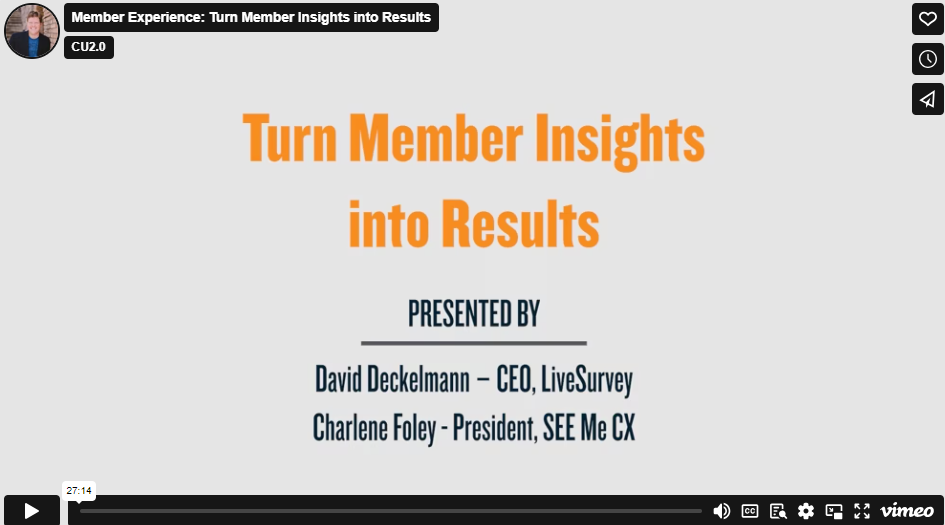Credit unions today must compete with big banks and fintechs alike. To attract and retain members, credit unions must tap into the voice of those members.
A “Voice of the Member” program opens a communication channel that allows your credit union to stay up to date on what your members are expecting from you. Here are some best practices to guide you if you’re creating or revamping your own:
1. Be Proactive
Don’t wait for your members to tell you what they think. Go out and ask them.
Digital transactional surveys work best here (way better than paper surveys). For example, email and text surveys will connect you to members who just interacted with your credit union immediately. No waiting until they’ve forgotten their experience!
Phone surveys may also be fast, but let’s be real. It’s 2021. Nobody wants to pick up the phone and sit through a phone survey.
Bonus tip: Quicker is better. Surveys about recent transactions are more likely to get responses and will also generally gather better quality feedback.
2. Read Everything and Share Results Regularly
Survey scores and member comments should be reviewed constantly. The point of a “Voice of the Member” program is to create a conversation—so it’s extremely important that everyone be given a chance to “listen” to what members are saying. When deciding who should be included in the review process, ask yourself this question: “Who in our organization can impact these scores?” If the answer is “everyone” (hint: it is), then you should look for ways to share the results with all staff.
Bonus tip: Beware of the becoming overly focused on the “warm fuzzies”. Positive feedback is good, but as Bill Gates says “Your most critical customers are your greatest source of learning”.
3. React Quickly Whenever Possible
Negative responses are the most useful feedback, and they also give your organization the greatest opportunity to make progress. Member comments are a great source of information about what is, and isn’t, working at your credit union. Individual coaching sessions, best practice reminders, and process reviews should all be driven by the feedback received.
Bonus tip: Once a member shares a negative experience, a timely, meaningful attempt to rectify the situation can be the difference between a lost member and a lifelong fan. Set up an automated notification system for when negative feedback is received, and have a “response team” designated to reach out to members and fix problems.
4. You Have to ‘Walk the Walk’
Set up a process to review results, and track scores over time. It’s one thing to calculate your Net Promoter Score or other chosen metric, but the important factor of the score is whether it is moving up or down based on your reactions. Survey scores and member comments are the “voice” of your membership, and your “answer” is the actions you take based on what they tell you. This is not a one-time occurrence, but rather an ongoing conversation that will create the kind of member relationship that will last a lifetime.
Bonus tip: In order to foster the view that survey results matter, incorporate individual survey results into your performance review process for staff, branch level results for managers, and organizational results for executives.
If member loyalty or member satisfaction are important to your credit union, then a Voice of the Member initiative may be an important way to take proactive steps to bringing a critically important communication channel online. One that could change your culture for good.




